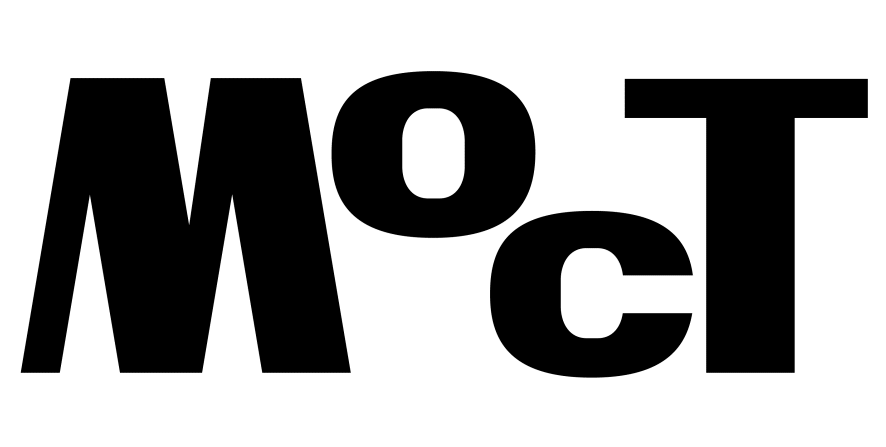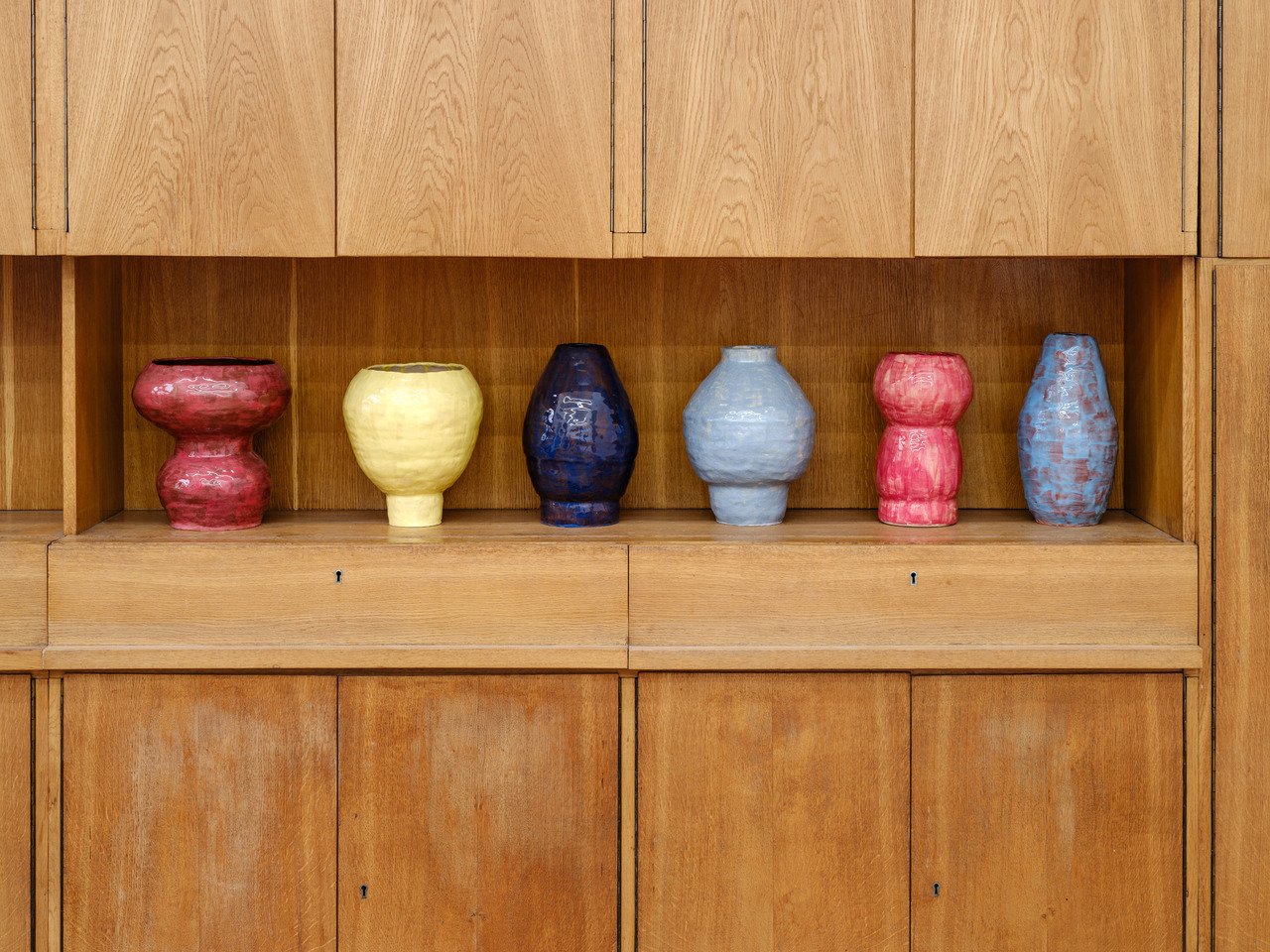Natalia Malek
The title of Alicja Bielawska and Małgorzata Widomska’s exhibition, I Intertwine Your Fingers with Mine, subtle and surreal, taken from one of Widomska’s poems, signals the encounter between the two artists is going to be a special one. But despite the initial defamiliarization, twining is an ordinary, even intimate activity. Women weave, knit and braid in domestic or work spaces. Textiles have been produced thanks to their hands, away from people’s eyes and somewhat on the outskirts of more eminent events. Neither home nor workshop are quite representative spaces. The dynamics between the domestic and lavish, concealed and exposed gives entwinement another context. In both home and workshop, what is ready entangles with what is only becoming. The desired tangles with the feasible.
In Bielawska and Widomska’s exhibition, entwinement is seen in positive terms, as a connection rather than a threatening entanglement. In Death of Man, a small home-like Warsaw gallery significantly equipped with a big wooden closet (a typical piece of home furniture), the two artists present works that dialogue with each other in a friendly proximity. Although their works differ in terms of techniques–Widomska’s primary medium is the oil painting, whereas Bielawska decided to show her textiles and ceramics–displayed together, these works add several other contexts and hint at diverse types of connections we may make when we open up to a lived experience.

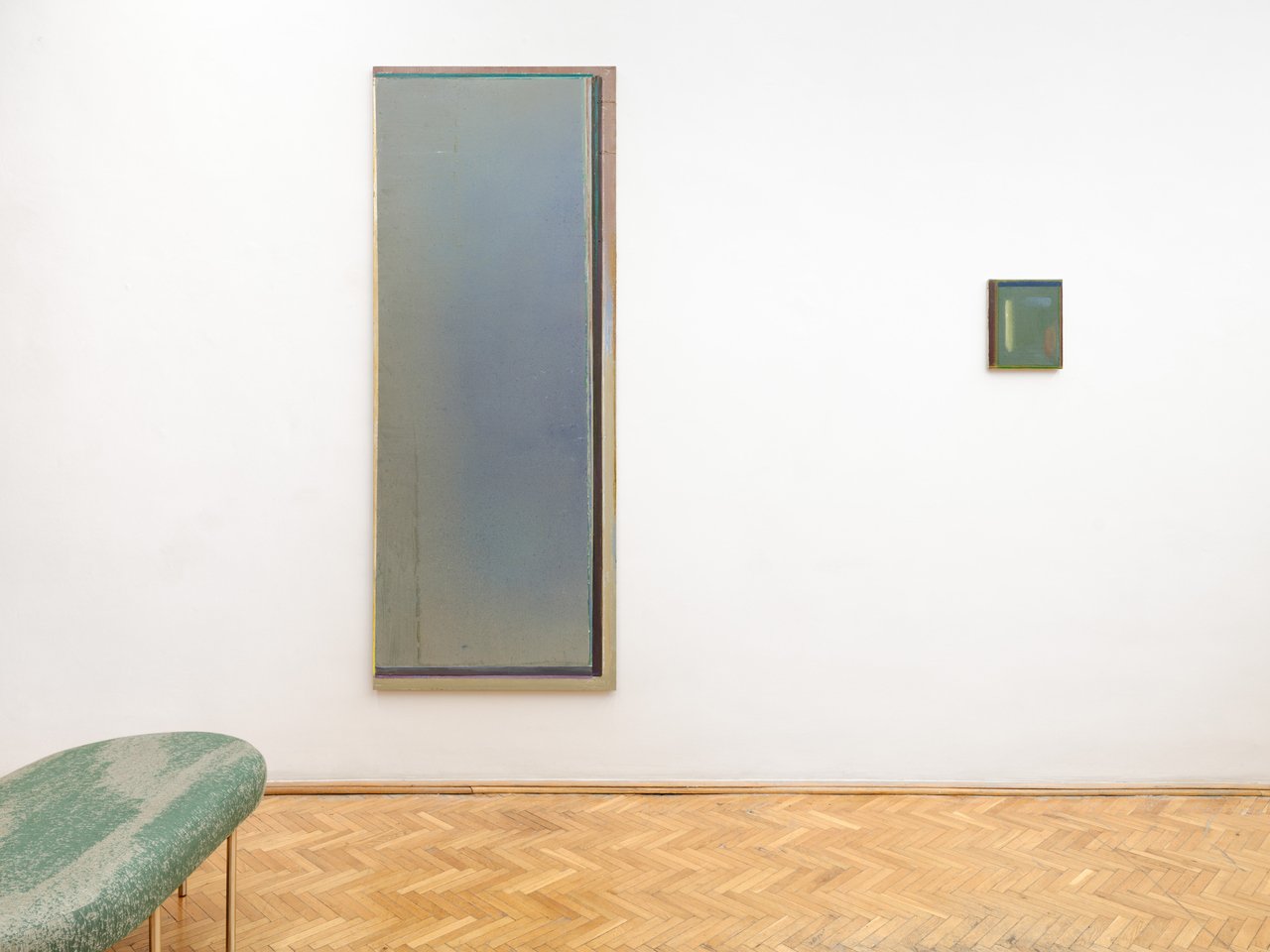
Both artists are particularly attuned to details. It seems counterintuitive at first. Małgorzata Widomska’s two abstract oil paintings, The Great Mirror and The Door to My Father’s, are quite big is size. One canvas is 200 cm and the other 220 cm tall, which may indicate the artist will be interested in synthesizing or summarizing her experience more than in recreating the particulars of it. Yet what these canvases actually depict are small, inconspicuous pieces of Widomska’s family home furnishings. The artist contemplates an uneven gouge in the door to her father’s study, or the corroding edges of a hall mirror. Such an attentive consideration, or gaze, seems related to the painter’s creative strategy. As she writes in her statement, for her, the canvas enables the artist to work on the source experience, give or uncover the meaning of it. Looking at her paintings, we get right into someone’s contemplative mind, where life is being studied and apprehended in its many manifestations. It is a world where everything has its own texture, smell and history, as well as its own future incarnation, for example, in someone’s memory.
Alicja Bielawska is attuned to the details of ordinary objects in a similar way. It may sound, again, a bit confounding as we would rather expect her to be focused on the composition, i.e. elaborate abstraction. And undoubtedly, Bielawska’s works are based on her deep understanding of composition. But as we read her poems accompanying the exhibition–the artist herself sees them as registers of her sensual encounters with textiles and ceramics–we realize The Screen and Dishes may carry other meanings as well.
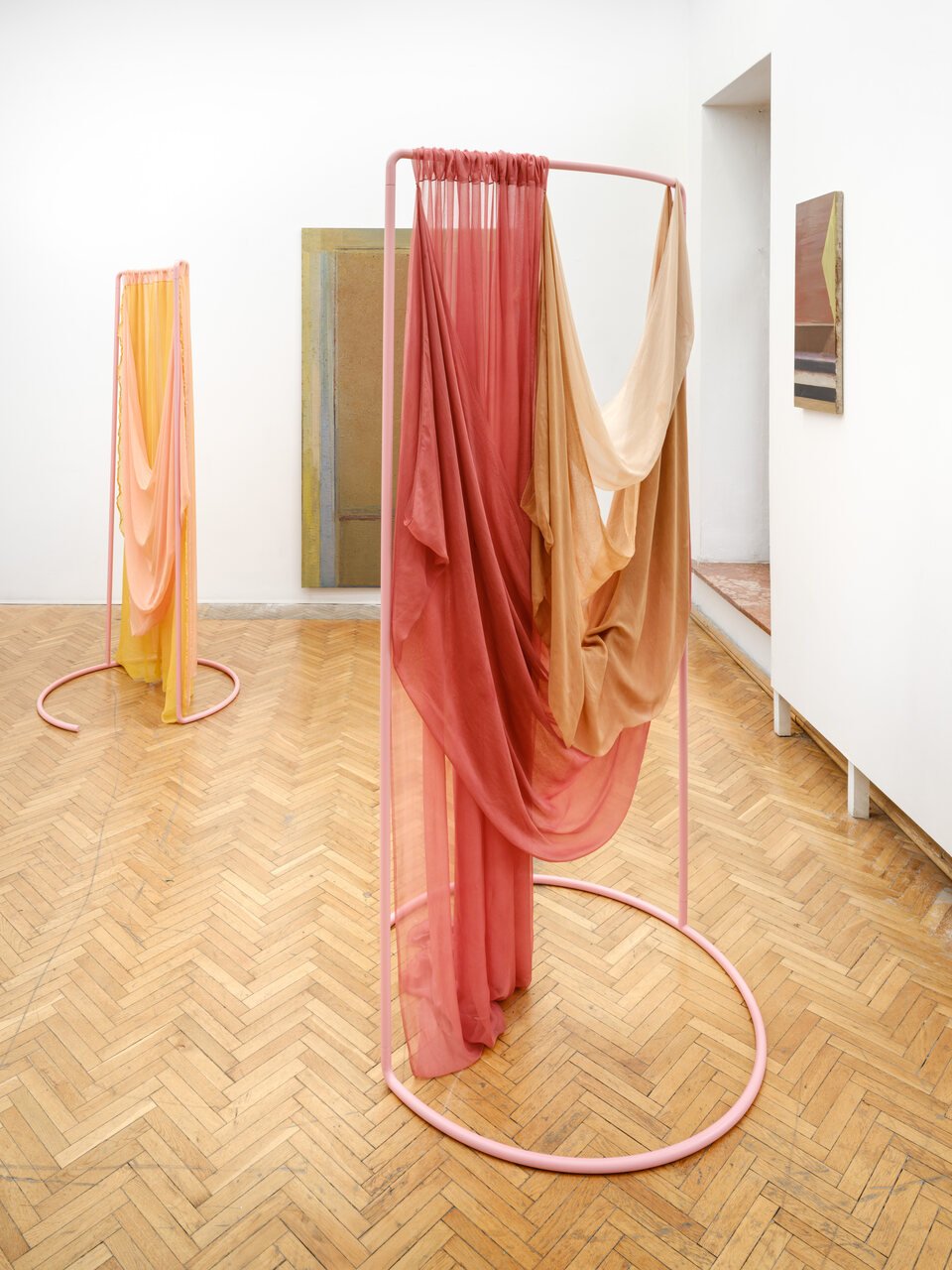
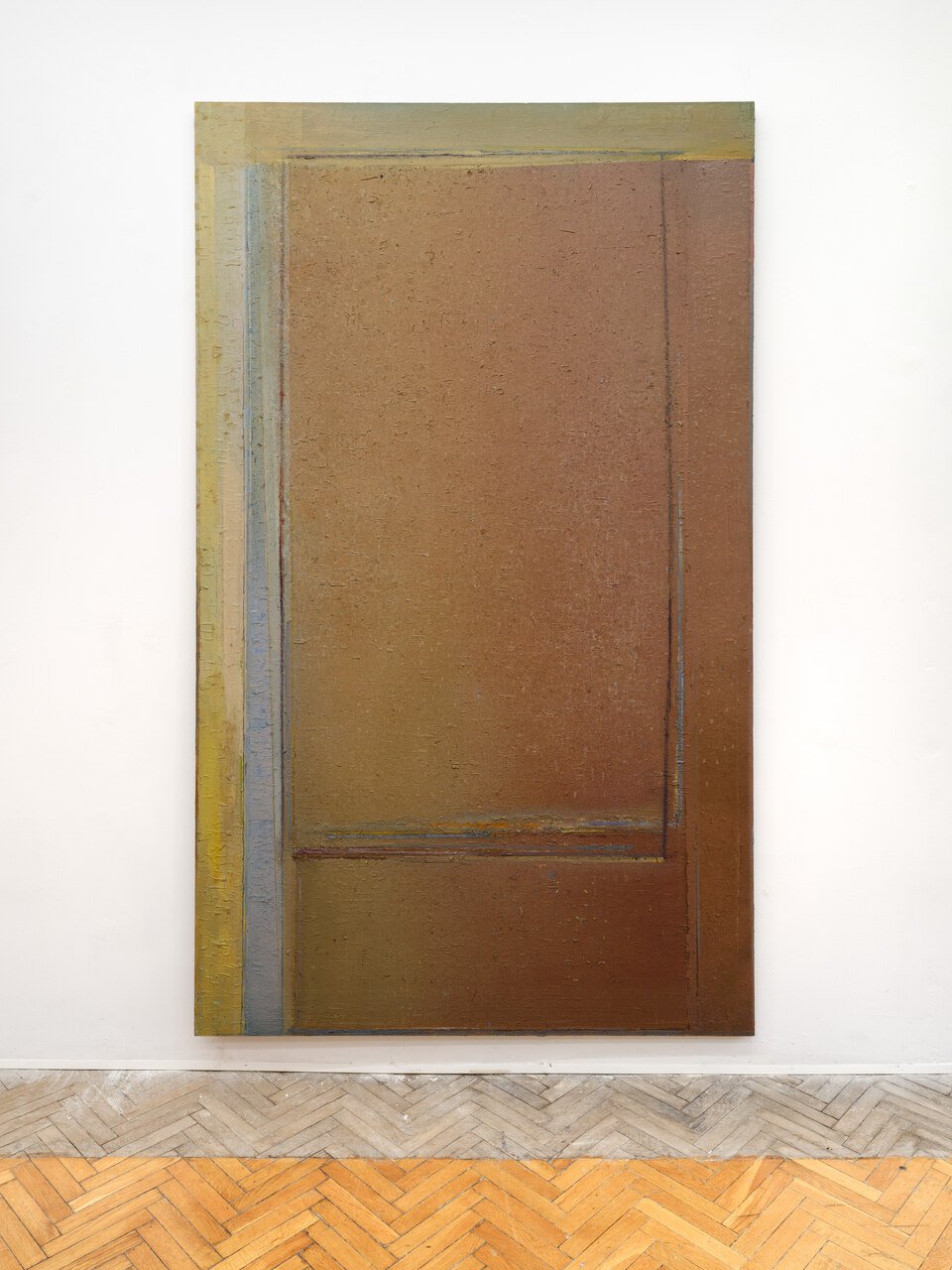
Hand-dyeing and drying textiles, draping them on metal racks, admiring their softness or roughness, or–following the clay deformation and studying traditional ceramics firing and glazing techniques, the artist does not only recount her creative process, but also seamlessly redirects the viewers’ attention to what surrounds us. To what is most material and mundane, and very close to our bodies.
In Bielawska’s art, the realm of everyday life is in constant move. It is moving in both meanings of the word, moving us as well. It is a world in which a doorknob protrudes from a shape, colors can stroke human hands, wool has its own taste, and geometric figures, which in Euclidean geometry stubbornly remain two-dimensional, can materialize in the ordinary objects such as a table or bed. All these shapes, colors, smells and tastes also move through time by means of desire or memory.
I Intertwine Your Fingers with Mine is also very much an exhibition of what is not exhibited. Both on the level of the narrative–after all, we must recount how the father’s study might have been, what it might have meant for him, and what it might have been for a small child ourselves, based on Widomska’s fragmented recollections as an adult artist–and on the level of certain residuality, lingering and fleetingness inherent in a sensory experience, researched and present in Bielawska’s art.
Another connotation of intertwining, which only exists in Bielawska and Widomska’s native tongue, is obscure talk. In Polish, gibberish and plaiting are homonymous. Speaking incoherently, giving incomplete information and fantasizing, especially when we fill the gaps in what we know with imaginary stories, is called the same as interweaving. Historically, women’s voices were often silenced with this derogatory term. The feminist revisions of art techniques and somewhat arachnological reclaiming of applied arts–textiles, ceramics and crafts in their broadest sense–in this exhibition, therefore, include not only its formal level, but also the level of deepest narrative.
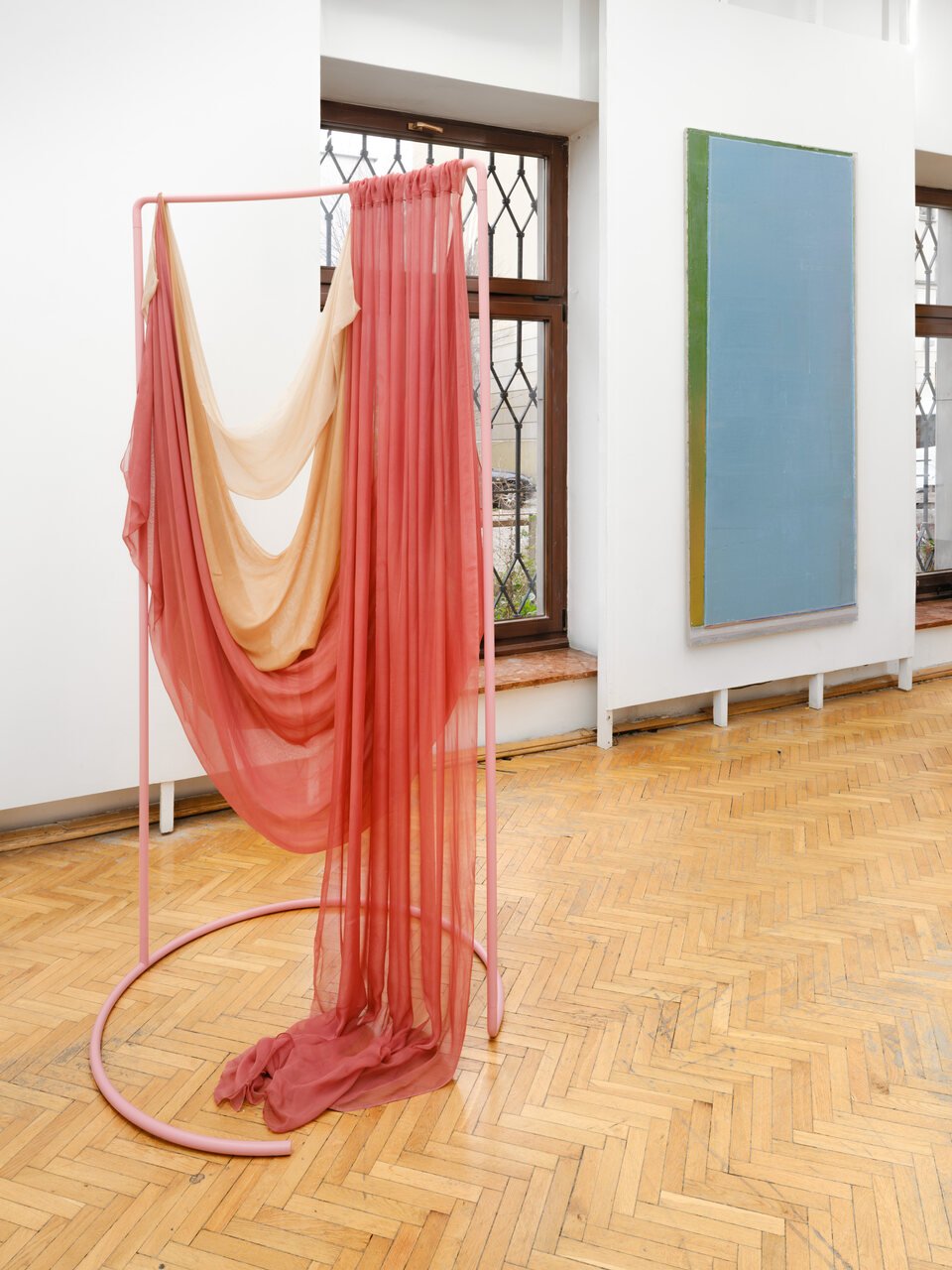
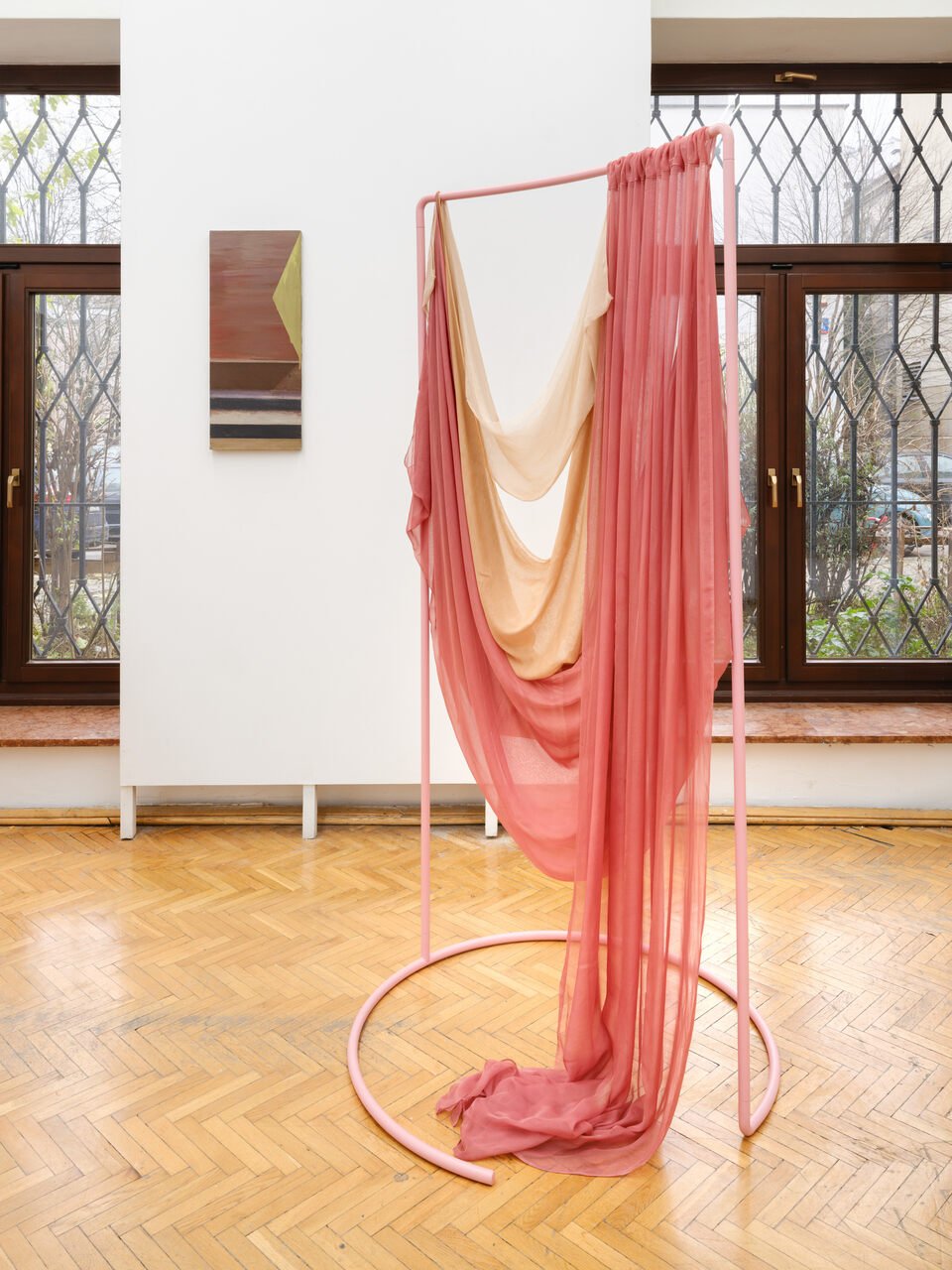
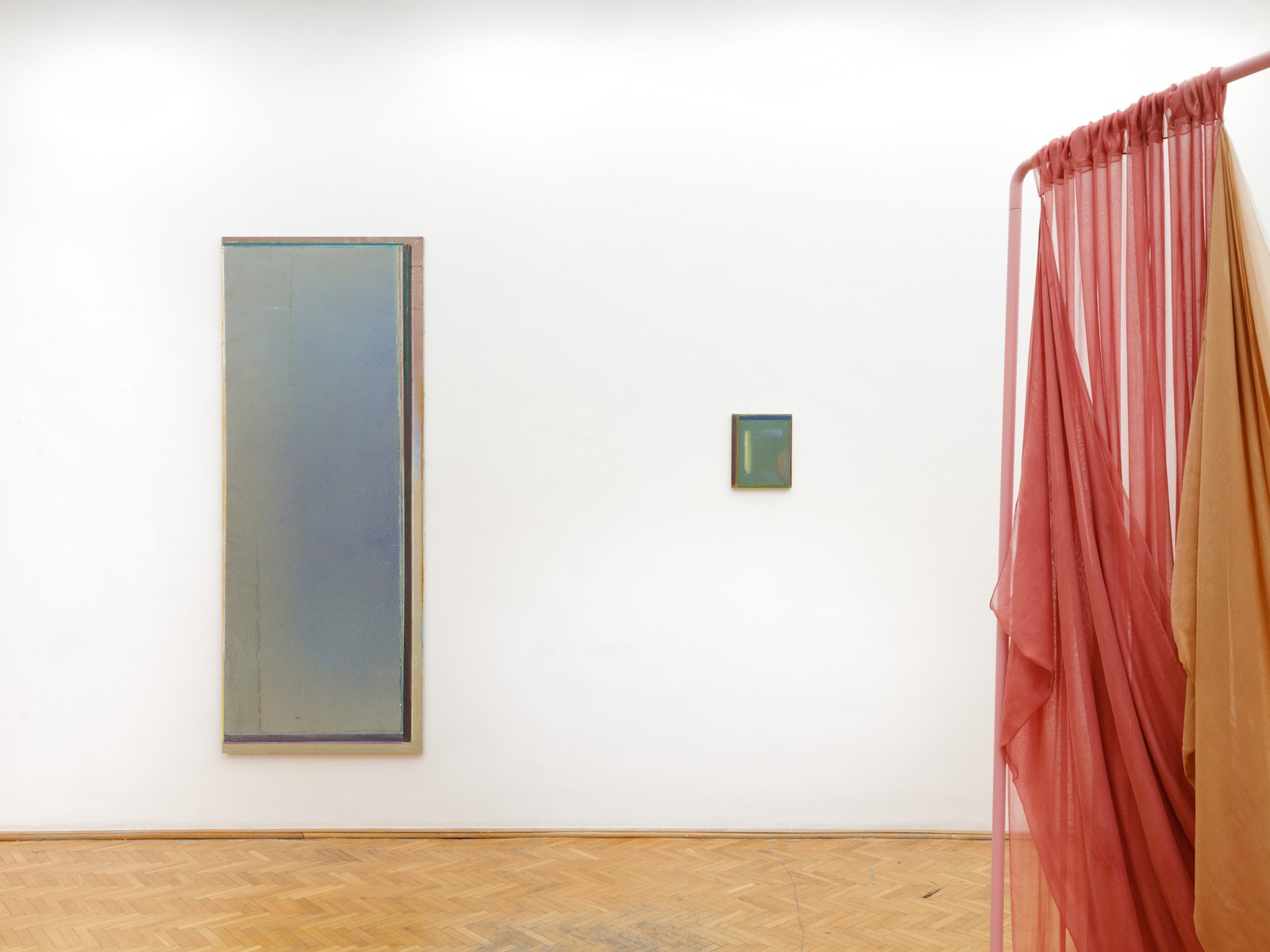
Artist: Alicja Bielawska, Małgorzata Widomska
Exhibition Title: I Intertwine Your Fingers with Mine
Venue: Death of Man Gallery
Place (Country/Location): Warsaw, Poland
Dates: 30.11 – 27.12.2024
Photos: Photos by Bartosz Górka. All images courtesy of the artists.
